About
Visit
Museum
Photos
Video
News
Events
Roof and Building Improvement Project - click on Announcements
thru Dec. 19 - noon choirs sing on weekdays



STATEHOUSE NEWS

Haunted Statehouse Tour tickets are still available. The special evening tours will take place during two weekends in October: Friday, October 18 and Saturday, October 19; and Friday, October 25 and Saturday, October 26.
Each tour will last approximately an hour. Available tour times include: 7 p.m., 7:30 p.m., 8 p.m., 8:30 p.m. and 9 p.m. Tickets are limited to 40 individuals per tour time each night. This event has sold out the previous seven years.
Tickets for the Haunted Statehouse Tours are $12 per adult and $6 per child under the age of 12. Tickets must be purchased in advance.
Tickets can be purchased three ways:
-Online at www.statehouseshop.com (click "Seasonal");
-By visiting the Statehouse Museum Shop on the ground floor of the Ohio
Statehouse;
-Or purchasing over the phone by calling 614/728-9234.
Statehouse staff members and volunteers will combine history and legend in this special family-friendly haunted Statehouse tour. Conductors will lead visitors through the dimly lit limestone corridors of the Ohio Statehouse by lantern. This historical tour is spooky but appropriate for all members of the family. The tour is most suitable for individuals over the age of 12.
Special activities will be available to participate in before each tour. The Statehouse Museum shop will be open throughout the evening and will offer candy apples, candy and caramel corn, cookies and soda for purchase. In addition, special Halloween merchandise will be offered for purchase. More information is available at www.statehouseshop.com.
Visitors to the Ohio Statehouse are invited to park in the facility's underground parking garage. This convenient and affordable parking offers direct sheltered access to the Ohio Statehouse for this event. Parking fee is not included in ticket price. Parking rates are available at www.ohiostatehouse.org.
For more information about the Haunted Statehouse Tours, visit www.ohiostatehouse.org
or contact 614/728-9234.
High resolution press images are available at:
http://www.ohiostatehouse.org/Multimedia/MediaLibrary/Collection.aspx?start=1&collectionId=108513.
To view this press release and others, visit www.ohiostatehouse.org.
# # #
The Ohio Statehouse will celebrate Earth Science Week by offering a FREE fossil tour of Capitol Square. The special tour will take place on Friday, October 11 from noon until 1 p.m. The tour will depart from the Map Room, located on the ground floor of the Ohio Statehouse. Participants will explore the building stones that make up the Ohio Statehouse and Senate Office Building.
The tour will be conducted by Dale M. Gnidovic, curator of the OSU Orton Geological Museum, and Mike Angle, assistant division chief at ODNR Division of Geological Survey. The tour will focus on the "Building Stones of Capitol Square." For more information, visit www.earthsciweek.org. To reserve a free spot, call 614/728-2697 or lstedke@csrab.state.oh.us.
The Ohio Statehouse is constructed of Columbus Limestone. Columbus Limestone is of the Middle Devonian age and was named for the city where it has long been quarried. A large vein of Columbus Limestone formed in a north-south line, from the Glacial Grooves of Kelleys Island in Lake Erie, south to Columbus, Ohio. Four hundred million years ago the limestone was the sandy bottom of a tropical ocean that covered the state. Fossils of marine animals are abundant in Columbus Limestone and can be seen throughout the Capitol Square complex.
To view this press release and others, visit www.ohiostatehouse.org.
# # #
CALENDAR LISTING:
Earth Science Week Fossil Tour
October 11, 2013, Noon
Ohio Statehouse, Broad &; High Streets downtown Columbus
Map Room, Ground Floor of Statehouse
www.ohiostatehouse.org
614/752-9777
To reserve a free spot, call 614/728-2130 or lstedke@csrab.state.oh.us.
The Capitol Square Review and Advisory Board (CSRAB) will host a “Thank-You Celebration” for the agency’s retiring Chairman, Senator Richard H. Finan, Wednesday, October 16 from 4-6 p.m. A short program is scheduled for 5 p.m. in the Ohio Statehouse Atrium. The event is free and open to the public.
Established in 1988, by the 117th Ohio General Assembly (OGA), CSRAB managed the massive $132 million restoration of the Ohio Statehouse and Capitol Square. With completion of the restoration in 1996, CSRAB transitioned from construction manager to building authority. CSRAB is charged with “maintaining the historic character of the Statehouse and Capitol Square while providing for the health, safety and convenience of those who work in and visit the complex.”
For forty years, Senator Richard H. Finan has dedicated his life to serving his fellow Ohioan’s in a variety of positions at the state level. Senator Finan was first elected to the Ohio House of Representatives in 1973, having previously served as Mayor of Evendale. He joined the Ohio Senate in 1978 and was elected the body’s president in 1997 serving through 2002. During his early years in the OGA Finan found the condition of the Ohio Statehouse wanting. The original Greek Revival edifice was showing signs of age and the interior had been neglected since the mid 1950’s. “I had a fire chief from Evendale come visit shortly after I started in the House. He found 65 code violations in a short walk from the parking garage to my office in the basement of the Statehouse, the place was a firetrap,” Finan explained in a 2011 interview with reporter Bill Cohen.
Under the leadership of Finan, the Capitol Square restoration master plan began in October 1989. The Senate Building and Atrium restoration projects were completed in 1993. The Ohio Statehouse became the focus of the project in 1993 and was completed three years later.
Throughout the restoration, Senator Finan pushed for historical accuracy whenever possible. His belief in restoring the Ohio Statehouse to its 1861 glory wasn’t always easy or inexpensive. The Senator educated skeptics on the importance of historical accuracy and outlasted the detractors and political winds of the time. Today visitors can see a reproduction of the 1849 stained-glass Seal of Ohio skylight, located in the Rotunda oculus. William Powell's "Perry's Victory," the first piece of artwork commissioned for the Statehouse, was returned to its original location in the Rotunda.
As Chairman of the Capitol Square Review and Advisory Board, Richard Finan championed the history, preservation and functionality of the Ohio Statehouse. He served as a true leader and interpreter of Statehouse history for legislators, dignitaries and guests. “There is no doubt in my mind that without the vision, passion and leadership of Senator Richard H. Finan, the Ohio Statehouse would not be the architectural jewel it is today,” said William Carleton, executive director of the Capitol Square Review and Advisory Board. “As the only chair this agency has known Senator Finan has been a steadfast and passionate advocate for this magnificent building.”
Because of Senator Finan’s dedication to educating young people about Ohio history and the legislative process, he led the way to create a museum and education center on the Statehouse’s ground floor. Featuring educational displays and hands-on computer kiosks, this area serves nearly 80,000 tour visitors each year, inspiring the next generation of public servants.
Please, join us in celebration of Senator Richard H. Finan’s forty years of service to the State of Ohio, Wednesday, October, 16 from 4-6 p.m. in the Statehouse Atrium. Messages of congratulations and thanks should be sent to the Capitol Square Review and Advisory Board prior to the event. Mail to:
Senator Finan Thank You
Ohio Statehouse
1 Capitol Square
Columbus, OH 43215
To view this press release and others, visit www.ohiostatehouse.org.
# # #
The Capitol Square Review and Advisory Board and Capitol Square Foundation are seeking nominations for the 2014 class of “Great Ohioans.” The award commemorates Ohioans who have played a significant role in an event, or series of events, of lasting significance in World, American or Ohio history. Additional criteria include being born in Ohio or lived in Ohio for a minimum of five years. At least 25 years must have passed since the commemorated event, in which the nominee participated.
This award is an opportunity to recognize Ohioans who have made an impact in a number of important areas. A complete explanation of the nomination process and nomination forms can be found online at www.ohiostatehouse.org or http://www.capitolsquarefoundation.org/Great_Ohioan.htm.
All Ohioans, including teachers and students, are encouraged to participate in the nomination process.
Great Ohioan nomination categories include:
• inventions/medicine/science
• literature/journalism/history
• academics
• communications/education
• entertainment/sports
• government/military/public service/religion
Deadline for nominations is Sunday, December 1, 2013. The Capitol Square Foundation may select up to three nominees to submit for selection to the Capitol Square Review and Advisory Board, the oversight body for the Capitol Square complex. The Great Ohioan Award recipients will be announced and recognized in early 2014.
Since 2003, 30 Great Ohioans have been recognized with the award for the special roles they played in history. The Great Ohioans include;
2003 Class: Orville and Wilbur Wright, inventors; John Glenn, first American to orbit the earth; and Neil Armstrong, first man to walk on the moon;
2008 Class: Jesse Owens, Olympic track and field star; Thomas Edison, inventor; Harriet Beecher Stowe, author; James Thurber, journalist and author; Colonel Charles Young, military leader; and Dr. George Crile, founder of the Cleveland Clinic;
2009 Class: Catherine Nelson Black, health care humanitarian; Salmon P. Chase, Ohio Governor, Secretary of the Treasury and U.S. Supreme Court Chief Justice; Paul Laurence Dunbar, poet and author; Charles F. Kettering, inventor; Eddie Rickenbacker, World War I fighter ace; and Denton T. “Cy” Young, baseball legend.
2010 Class: James M. Cox, journalist, member of the United States House of Representatives, Ohio Governor; Florence Ellinwood Allen, first woman Ohio Supreme Court Justice; Bob Feller, baseball legend; and Bill Willis, National Football League hall of famer.
2011 Class: Ulysses S. Grant, Civil War General and U.S. President; William Moore McCulloch, Speaker of the Ohio House of Representatives, U.S. Congressman and civil rights advocate; William Howard Taft, U.S. President and U.S. Supreme Court Chief Justice; and Harriet Taylor Upton, women’s rights advocate and author.
2012 Class: Gordon Battelle, philanthropist and researcher, Dominic Salavtore “Don” Gentile, World War II fighter pilot; Washington Gladden, clergyman and social reformer; Albert Belmont Graham, founder of the 4-H program; Albert Sabin, medical researcher best known for the oral polio vaccine; and William T. Sherman, Civil War general.
2013 Class: James Abram Garfield, scholar, Civil War General and U.S. President; Granville T. Wood, entrepreneur and inventor; Paul Brown, professional football innovator, coach and executive.
A special exhibit in the Ohio Statehouse Museum pays tribute to all Great Ohioan Award recipients. On a large touch screen, a host of options are available for visitors to explore the life and accomplishments of each recipient. While countless Ohioans have performed great actions for their community and beyond, only a select few have been named a “Great Ohioan.” The exhibit allows visitors to have a greater understanding of the recipients of the Great Ohioan award and discover how they affected local, national and world history. The exhibit uses video, photos and web based technology to explore the life and legacy of each Great Ohioan. The Capitol Square Foundation has raised more than $5 million in private donations for the new museum and enhanced education programming at the Ohio Statehouse.
The Capitol Square Review and Advisory Board is responsible for maintaining the historic character of the Statehouse and Capitol Square while providing for the health, safety and convenience of those who work in and visit the complex. The Ohio Statehouse Museum shines a light on the history of this great edifice, its symbolic meaning and its vital historic and ongoing connections to the daily lives of all Ohioans.
The Capitol Square Foundation was established in 1987 to increase public awareness of and to involve citizens in the history of the Ohio Statehouse. Its purpose is to raise funds to obtain, restore and maintain artifacts and other items related to the history and enhancement of this grand monument and its adjoining grounds, so that the seat of Ohio's government may reflect the dignity of the state and its citizens.
# # #
Ohio Statehouse, Room 16
Columbus, OH 43215
(614) 221-5825
Fax: (614) 221-1989
Email: CSF@AssnOffices.com
This form may be replicated by photocopying, scanning, or other means for easier preparation.
Great Ohioan Nomination Form
Award Goal: To commemorate the significant role of Ohioans in an event or series of events of lasting significance in World, American or Ohio history through the awarding of the Capitol Square Foundation’s “Great Ohioan” Award.
Award Criteria:
• Must be an individual Ohioan or group of Ohioans who have made a significant or lasting contribution to the World, American or Ohio history; and
• Must have been born in Ohio or lived in Ohio for a minimum of five years; and
• At least 25 years have passed since the event, which the nominee played a role in, is being commemorated; and
• There is a compelling reason why the Ohio Statehouse, rather than some other location in the state, should be the location of the award or commemorative work.
NOMINEE NAME ___________________________________________________________________
Category: - Inventions/Medicines/Science - Literature/Journalism/Historiography - Academics
- Communications/Education - Entertainment/Sports - Government/Military/Public Service/Religion
ADDRESS (if known)__________________________________________________________________
PHONE ____________________ FAX ___________________ EMAIL __________________________
Please include with this nomination form, a narrative (no more than three pages) explaining how the nominee meets the award criteria mentioned above.
NOMINATOR NAME ___________________________________________________________________
COMPANY/SCHOOL____________________________________________________________________
ADDRESS _____________________________________________________________________________
PHONE ____________________ FAX ___________________ EMAIL ____________________________
Please mail 1) nomination form and 2) narrative to: Great Ohioan Committee, Ohio Statehouse, Room 16, Columbus, OH 43215. Fax: 614-221-1989 Attn: Great Ohioan Committee. Email: CSF@AssnOffices.com
Please submit nominations by: December 1, 2013
A special exhibit pays tribute to all Great Ohioan Award recipients at the Ohio Statehouse Museum.
Members of the Capitol Square Review and Advisory Board (CSRAB) will meet Thursday, October 17, 2013 at the Ohio Statehouse in downtown Columbus. The business meeting will be held in the State Room (Room 108) and will begin at 10 a.m. The meeting is open to the public.
The CSRAB will review its financial report, committee reports and other pertinent business of the agency. A detailed agenda of the CSRAB meeting will be available after October 11 by contacting the CSRAB office at 614/752-9777.
The CSRAB is responsible for maintaining the historic character of the Statehouse and Capitol Square while providing for the health, safety and convenience of those who work in and visit the complex.
To view this press release and others, visit www.ohiostatehouse.org.
# # #
It's almost that time of the year again to grab your loved ones and bring some holiday cheer to celebrate The Ohio Statehouse Holiday Festival and Tree Lighting. Save the date and join in on the fun at this year's celebration on Tuesday, December 3, 2013 from 5:30 p.m. to 7:30 p.m. This free family-friendly event is open to the public!
The festival marks the beginning of the holiday season on Capitol Square and throughout all of central Ohio. The indoor ceremony will consist of a short program, welcoming Santa and Mrs. Claus, followed by the lighting of our historically decorated holiday tree. The festivities will then continue with refreshments, arts and crafts activities, games and special performances by local bands and choirs. There will also be a free photo station available to capture your families' moment with Santa and Mrs. Claus.
Come and join us for this magical night at the Ohio Statehouse to start off your holiday season! Convenient and affordable parking is available during the event in the Ohio Statehouse underground parking garage. Parking rates are available at www.ohiostatehouse.org.
Holiday press images are available at: http://www.ohiostatehouse.org/Multimedia/MediaLibrary/Collection.aspx?start=1&collectionId=108513 or upon request.
To view this press release and others, visit www.ohiostatehouse.org.
The Capitol Square Review and Advisory Board (CSRAB) is responsible for maintaining the historic character of the Statehouse and Capitol Square while providing for the health, safety and convenience of those who work in and visit the complex. The Ohio Statehouse Museum Education Center coordinates tours of Capitol Square and provides information about the buildings, their history and Ohio's government.
# # #
Calendar Listing:
The Ohio Statehouse Holiday Festival and Tree Lighting
Tuesday, December 3, 2013
5:30 - 7:30 p.m.
Ohio Statehouse; 1 Capitol Square; downtown Columbus
www.ohiostatehouse.org
614/728-9777
Join us at the Ohio Statehouse for our family friendly Capitol Holiday Festival and Tree Lighting. This indoor event is free and open to the public with affordable parking available. Come and meet Santa and Mrs. Claus, watch the magnificent lighting of our holiday tree, enjoy some refreshments, participate in festive arts and crafts activities, and listen to the sweet sounds of local bands and choirs.
The Capitol Square Review and Advisory Board (CSRAB) has joined the Ohio Arts Council (OAC) in celebrating National Arts & Humanities Month (NAHM) throughout October. NAHM has been celebrated since 1993 and provides a great opportunity for people to participate in the arts offered in their communities.
The Ohio Statehouse will host special art tours and a performance during the month of October. Arts and Humanities Month events include:
October 2, 9, 16, 23 and 30; 12 p.m. to 1 p.m.; Wednesday Art Tours; Ohio Statehouse Map Room:
The Ohio Statehouse is renowned across the country for its Greek Revival architecture, but it also houses an incredible art collection. Special tours of “The People’s Art Collection” will take place every Wednesday in October from noon to 1 p.m. Visitors will have the opportunity to see and discuss a number of rarely-viewed works, including some of the governor’s portraits. Tours are free and open to the public, and are designed to encourage observation and conversation.
Friday, October 4; 11 a.m. to 12 p.m.; Thursday, October 24; 12 p.m. to 1 p.m.; Artist Events; Ohio Statehouse Map Room:
Two prominent artists, who have work on display at the Ohio Statehouse, will lead visitors through their artist process, from conception to completion. Oil painter and arts educator Ron Anderson will lead a special tour of his portraits on Friday, October 4, at 11 a.m. Anderson will discuss his work showcased in the George Washington Williams Room.
Leslie Adams, a portrait artist and painter, will talk about her Statehouse commissions during a special tour on Thursday, October 24 at noon. Adams will discuss how she works through a project, and the tour will highlight her governor and legislative portraits on display in the Ohio Statehouse.
Monday, October 7; 12 p.m. to 1 p.m.; Performance by Mo’ Mojo; Ohio Statehouse Atrium:
OAC and CSRAB will celebrate music with a performance by Mo’ Mojo, a popular, high energy, Zydeco-based “Party-Gras” band from Akron, featuring Cajun accordion, fiddle, guitar, bass, drums, rubboard/sax, percussion and vocals. Mo’ Mojo is featured in the OAC’s Ohio Artists on Tour directory.
October 16; 12 p.m. to 1 p.m.; Riffe Gallery:
Wednesday, October 16 at noon, the celebration continues at the Riffe Gallery Lobby with readings by notable Ohio poets Amy Greenberg, Susan Hendrickson, Terry Hermsen and Hannah Stephenson. The event is free and open to the public.
A visit to the Statehouse is also a good time to explore “The People’s Art Collection.” The artwork in the collection at the Statehouse depicts the hopes, dreams, values and aspirations of Ohioans - - and commemorates Ohio’s accomplishments and struggles. With the support of the Ohio Alliance for Arts Education and the Ohio Arts Council, CSRAB created integrated lessons about the works of art found within the Ohio Statehouse and on Capitol Square. These resources are available for parents and teachers on the Statehouse Web site at: http://www.ohiostatehouse.org/Education/PeoplesArtCollection.aspx.
Ohio National Arts & Humanities Month events are organized by the Ohio Arts Council with support from the Ohio Statehouse.
National Arts & Humanities Month is coordinated by Americans for the Arts, the national organization working to empower communities with the resources and support necessary to provide access to all of the arts for all of the people.
To view this press release and others, visit www.ohiostatehouse.org.
# # #
The Capitol Square Review and Advisory Board and Capitol Square Foundation will provide 105 school transportation grants to visit the Ohio Statehouse and its museum during the 2013-2014 academic year. The online application process will open at 9 a.m. on September 12. The grants will be made available to help schools defray bus transportation expenses to the Ohio Statehouse. Each awarded grant will be based on one-way mileage from the visiting school to Columbus. The program was created in 2009 by the Capitol Square Foundation. Since the program's inception, more than 60,000 students from nearly every Ohio county have visited the Ohio Statehouse with the help of this grant program. "We are grateful for the support from Honda of America and the Walmart Foundation," said Charles Moses, Capitol Square Foundation Chairman. "We are thrilled that so many young people will now have the opportunity to visit the Ohio Statehouse during this school year."
A total of 105 grants will be awarded; 35 grants in three mileage categories. The mileage categories are for a one-way trip from the visiting school to the Ohio Statehouse. "The transportation grant program provides thousands of Ohio school children with a learning experience here at the Ohio Statehouse," said William E. Carleton, Executive Director of the Capitol Square Review and Advisory Board. "Our goal is to inspire future leaders of Ohio."
The three mileage categories include:
1 to 50 miles, $ 200.00 transportation grant;
51 to 100 miles, $ 300.00 transportation grant; and
101+ miles, $ 400.00 transportation grant.
Each category will be closed once the 35 available grants have been awarded. All grants will be awarded on a first come-first served basis.
The school transportation grants will be available to any Ohio school that receives state funding. The grants are limited to Ohio students in the fourth through 12th grades during the 2013-2014 academic year. Only one transportation grant will be awarded to each school regardless of the number of buses or students visiting the Ohio Statehouse. A field trip to the Ohio Statehouse can be combined with visits to other educational attractions in downtown Columbus, including the Santa Maria, COSI and the Ohio Judicial Center.
Once the application process opens on September 12, only online applications will be accepted. All applications must be submitted by an authorized teacher or school administrator. Detailed information about the program is available at, http://www.ohiostatehouse.org/Tours/SchoolTours/TransportationGrant.aspx.
Applications will be accepted until every grant is awarded.
To view this press release and others, visit www.ohiostatehouse.org.
# # #
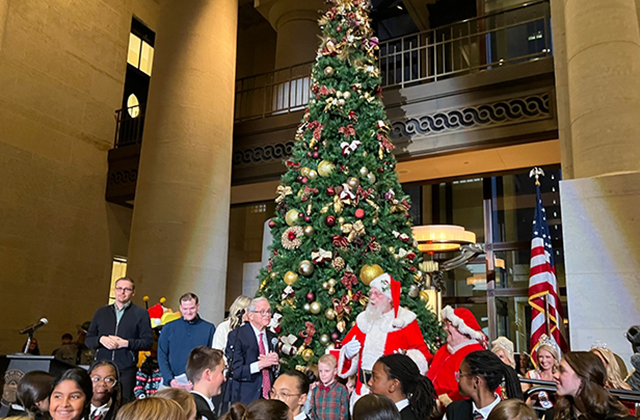 Holiday Festival and Tree Lighting 2025
Holiday Festival and Tree Lighting 2025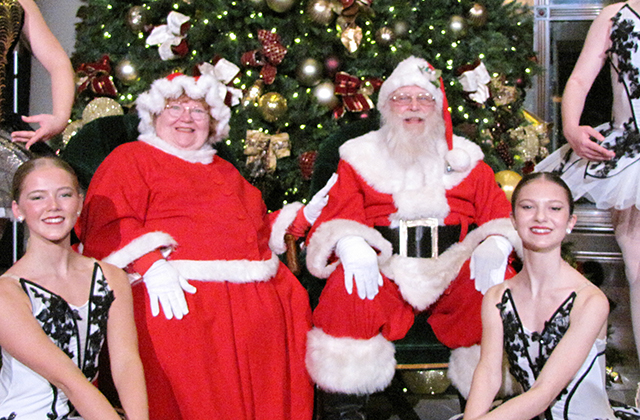 Holiday Santa Photos 2025
Holiday Santa Photos 2025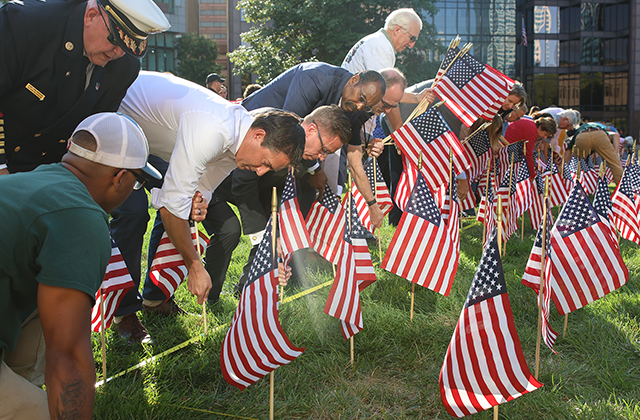 Flags for 9-11 in 2025
Flags for 9-11 in 2025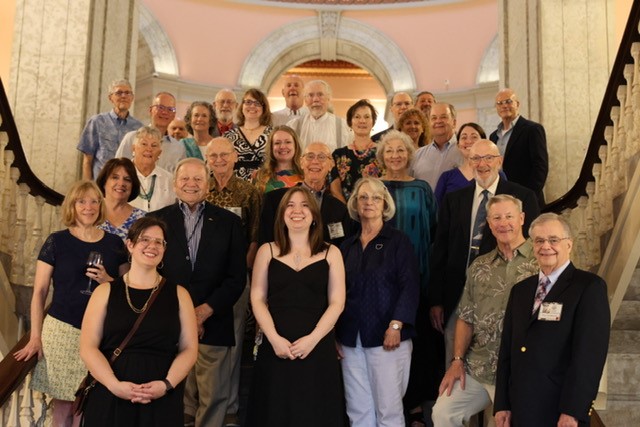 2025 Volunteer Appreciation Dinner
2025 Volunteer Appreciation Dinner America 250-Ohio
America 250-Ohio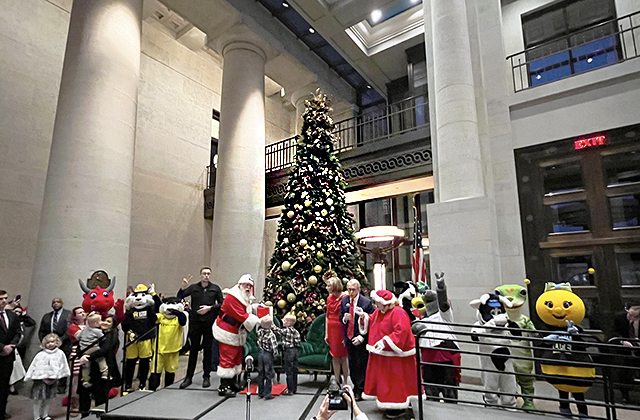 Holiday Festival and Tree Lighting 2024
Holiday Festival and Tree Lighting 2024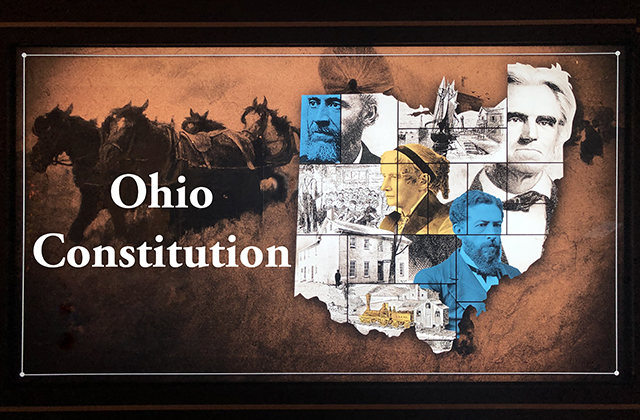 Ohio Constitution Videos
Ohio Constitution Videos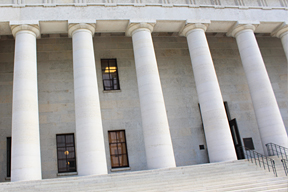 Ohio Statehouse Videos
Ohio Statehouse Videos






